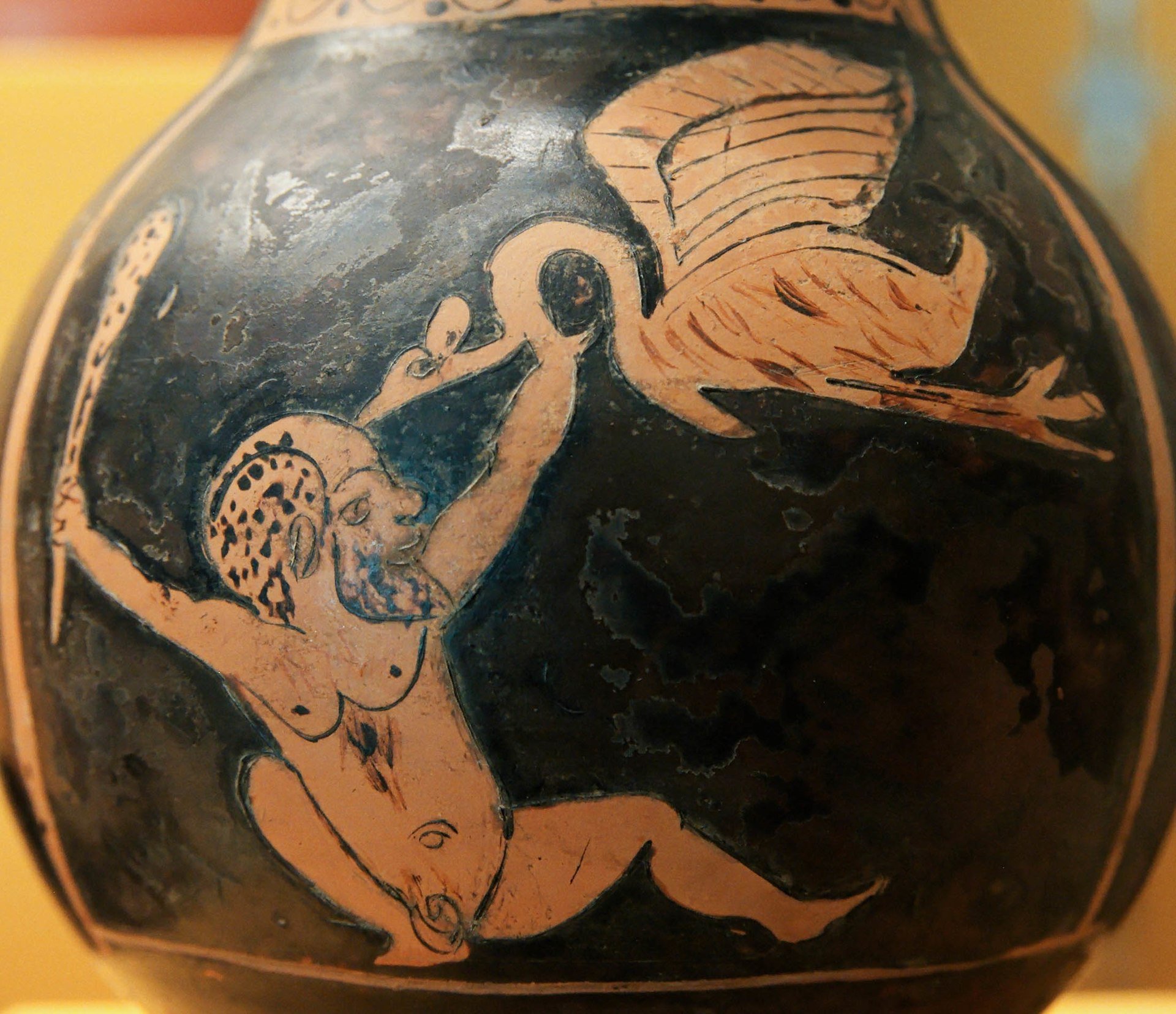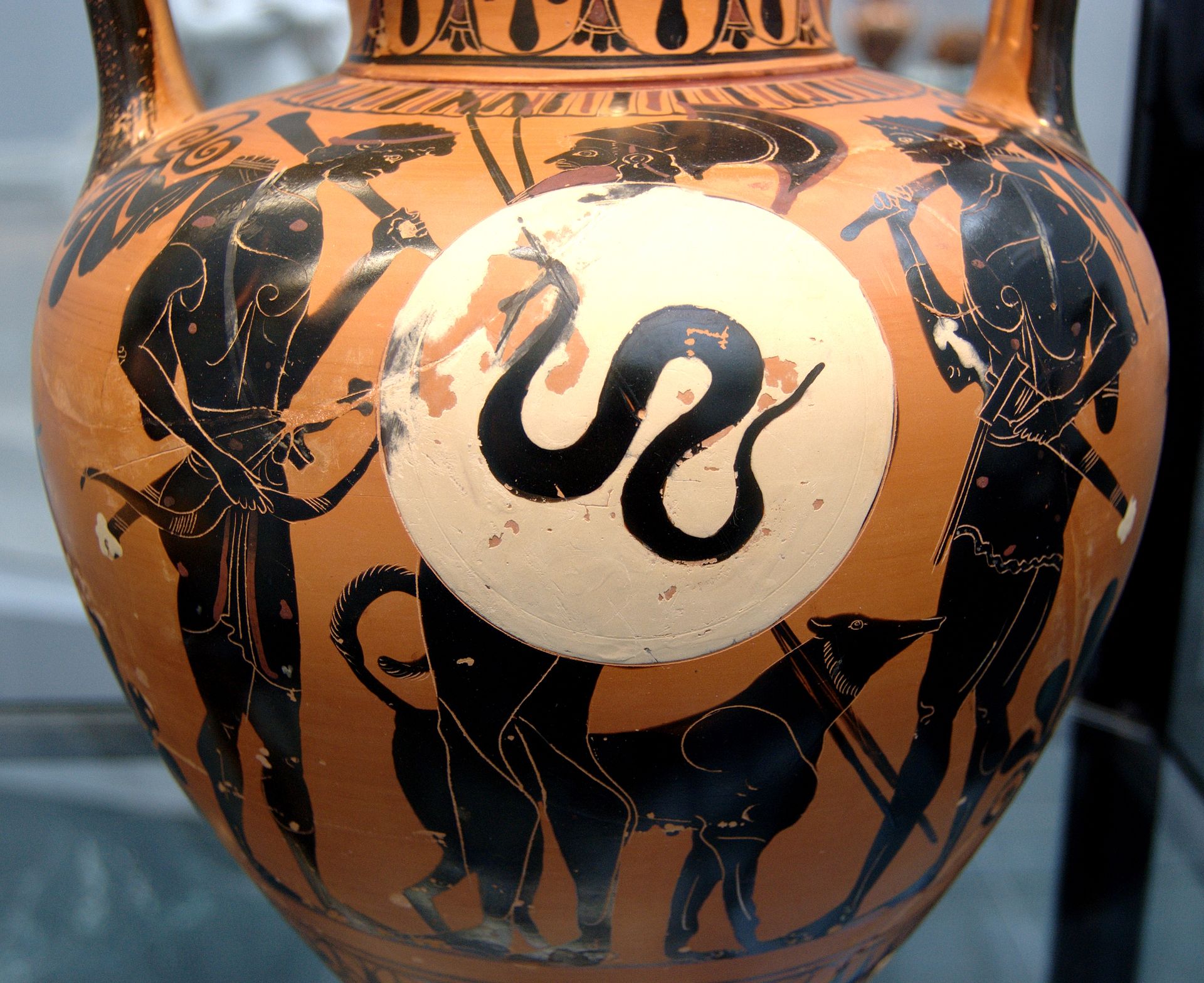
Africans and Ancient Greeks had long, rich history together often reflected in the depiction of Africa in Ancient Greek art. The first contact between Greeks and Africans was sometime during the Bronze Age. At this time, the Minoan culture on Crete flourished and their shipbuilding skills enabled them to travel to far-flung places such as Africa.
It was Homer (8th century BC) however who made the earliest mention in the Iliad and the Odyssey.
“Zeus went yesterday to Ocean to a feast with the blameless Ethiopians, and all the gods followed” Thetis says to Achilles. (Iliad 1.423-424)
It was thus that the great Ancient Greek poet established the idea of Africa as a magical, mystical place suitable even for the gods and in classical Greek art, it was a reputation that evidently prevailed for ages.
Ancient Greece and Homer’s Africa

Unknown to many is the fact that the name Ethiopia actually derives from two Greek words: αἴθω, aíthō, ‘I burn’ + ὤψ, ṓps, ‘face. Translated today it means ‘red-brown’ as an adjective and ‘burnt-face’ as a noun. Yet the expression was colloquial rather than pejorative. In the age of Homer, it represented an indistinct term describing all the peoples of Africa, from the upper Nile region of Sudan to the Sahara desert. To the Ancient Greek poet himself, they were highly esteemed people worthy of hosting the mythical rulers of his homeland.
There is no time to sit. To the streams of Ocean to the land of the Ethiopians, where they offer a hecatomb to the gods, I go once again, so as to receive my share of the feast. (Goddess Iris speaks to the winds. Iliad, 23.205-207)

This was the principle region Ancient Greek geographers observed, in particular the area then known as Nubia. Geographical knowledge increased nonetheless with narratives such as Periplus of the Erythraean Sea, a Greco-Roman work written in Koine Greek in the 1st century.
It was Herodotus (484–425 BC) in his Histories, who first made a map of the world. The father of history had traveled up the Nile to Egypt and then to ‘Aethiopia’ as he called it
Herodotus may have provided Ancient Greeks with the lay of the land. Yet, it was Homer’s Iliad and Odyssey which gave them the true beauty of Africa.
But Poseidon was visiting the far-off Ethiopians, the Ethiopians who are divided in half, the remotest of men, some of whom live where the Sun god sets, and some where he rises. There, Poseidon, receiving a hecatomb of bulls and rams, delighted in the feast. (Odyssey, 1.22-26)
The myth of Africa: Black figures in Classical Greek Art

The myth of Africa encouraged Ancient Greek to re-establish their connections in the 7th and 8th century B.C. after the collapse of the Minoan and Mycenaean civilizations in 1100 BC, which severed Greece’s ties with Africa.
They built settlements and trading centers along the Nile river. Renewed close contact influenced not only Ancient Greek art, but also its mythology. In their mythological tales, pygmies, for example, were those who lived farther south and fought mythic wars with cranes. Memnon was another giant of a mythological figure as the king of Ethiopia and son of Titus and Eos. In war, Ancient Greeks considered his skills as equal to Achilles’s and was the one who killed Nestor’s son Antiochus in the battle of Troy. At his death, Eos’s tears supposedly moved Zeus so much that he granted Memnon immortality.
Africans in Ancient Greek art is, in many ways, a tribute to this mutual history. Greeks considered Ethiopians as highly exotic and mirrored this in their portrayal of them in their sculpture, ceramic vases, masks and painting. They were also featured in tragic plays by the likes of Aeschylus, Sophocles, and Euripides.
This form of honoring Africans through their art grew significantly during the Hellenistic period between 323-31 B.C. Although Homer’s Ethiopia was no longer the central subject, Africans skills as athletes and entertainers were. Larger works such as their imagery on gold jewelry and bronze statues also became popular.
Africans did however often serve as slaves as well along with other Greek and non-Greek people. The debate about whether Greeks were prejudicial towards Africans continues in some domains, yet the Ancient Greeks depiction of Africans in both art and poetry would seem to dispute that claim since even the term was one made merely to acknowledge the difference in color rather than establish a racial hierarchy.
See all the latest news from Greece and the world at Greekreporter.com. Contact our newsroom to report an update or send your story, photos and videos. Follow GR on Google News and subscribe here to our daily email!



